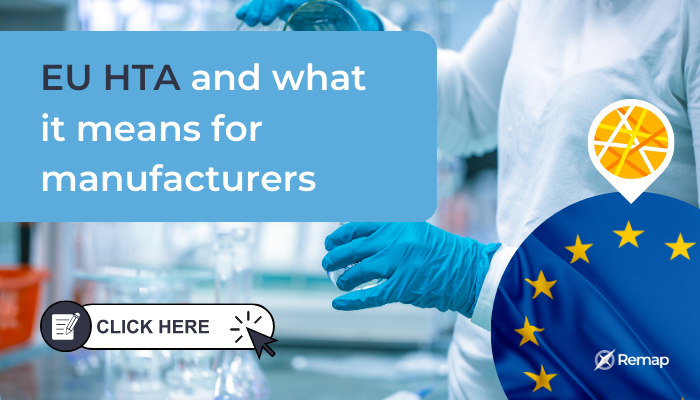Introduction
The Joint EU HTA is fast approaching realisation, with oncology products, advanced therapy medicinal products (ATMPs) and medical devices entering the process in less than two years and orphan drugs (drugs for orphan diseases, rare diseases that are life-threatening or chronically debilitating that affect less than 5 in 10,000 people) following in an additional three years. With that in mind, manufacturers need to start thinking about what impact the new process could have for them and what plans they could action to navigate in these changing waters.
Last year we wrote about challenges to the Joint EU health technology assessment (HTA) process and what it might mean to the manufacturers (read it here). The key challenges and implications we covered were:
- Market access planning must start at the EMA submission
- Differences and similarities between European and country endpoints and developing contingency strategies
- The short timeline until process implementation
Closer to the date of realisation, we still think these challenges persist in the joint EU HTA process. However, now that time is creeping up for oncology products, ATMPs and medical devices, manufacturers must begin to work with this process despite the uncertainty. However, the urgency in which to act depends somewhat on what products are in the manufacturer’s portfolio. Here, we have started to think about what manufacturers can be doing now and in the future to prepare themselves for the new process.
What to do right now?
Keep updated on the latest developments
- Monitor for any countries who write any legislation around the integration of the Joint EU HTA process, taking special note of any countries that add in legislation around additional clinical assessment. This may help manufacturers to better understand where submissions may have to be ‘adjusted’ or additional data collected
Do you have any ATMPs, oncology products or orphan drugs in your portfolio’s pipeline?
If yes:
- Start setting up cross-functional task forces, including medical, market access, regulatory, and health economics and outcomes research (HEOR), to create internal ways of working to accommodate for an EU submission
- Plan resource allocation to accommodate for regulatory and HTA dossiers to be developed concurrently in the lead up to the first product entering the process
- Prioritise understanding of suitability for joint scientific advice (JSA), to gain a better understanding of what the EU joint HTA process will be looking for and to understand if your company’s product fits the criteria
If no:
- Consider how your internal processes may change in the future. This could include making conceptual plans for how the business could work with the Joint EU HTA, such as capturing and communicating evidence earlier on in the market access process
- To inform the planning of clinical trials, begin to map the most relevant comparators, endpoints, and subpopulations across key markets. Use this information and documents released on the Joint Clinical Assessment (JCA) to inform on which comparators, endpoint and subpopulations will likely be relevant for the JCA
What to do in the future?
Watch how other manufacturers handle the process: As products begin to go through the Joint EU HTA process, observe their progress. Keep note of their success not only as the outcome of the JCA but also if anything further was submitted in the different EU markets. Map this information back to your portfolio
Prepare for country divergence: Though the aims of the JCA are to avoid duplication of work, it is likely that payers in some countries will request further information before they begin pricing negotiations. Consider the impact that will have in terms of workload and duplication within the company, but also on the products launch sequence
Get your team ready: Due to the overlap with regulatory it will be all systems go. Therefore, regulatory, market access, and HEOR will have to work more in sync to ensure all deadlines for dossier submission are hit
Conclusion
There is still a huge amount of uncertainty surrounding the Joint EU HTA process. This is making it challenging for manufacturers to plan for when it comes into force. As a result of this, the emphasis should be on developing plans that are flexible and enable team members to respond effectively to the latest updates. Manufacturers should be closely monitoring changes, with those developing ATMPs, orphan and oncology products actively developing how workflows will have to be optimised for the Joint EU HTA.
Want to know more about the Joint EU HTA? View our webinar here.
